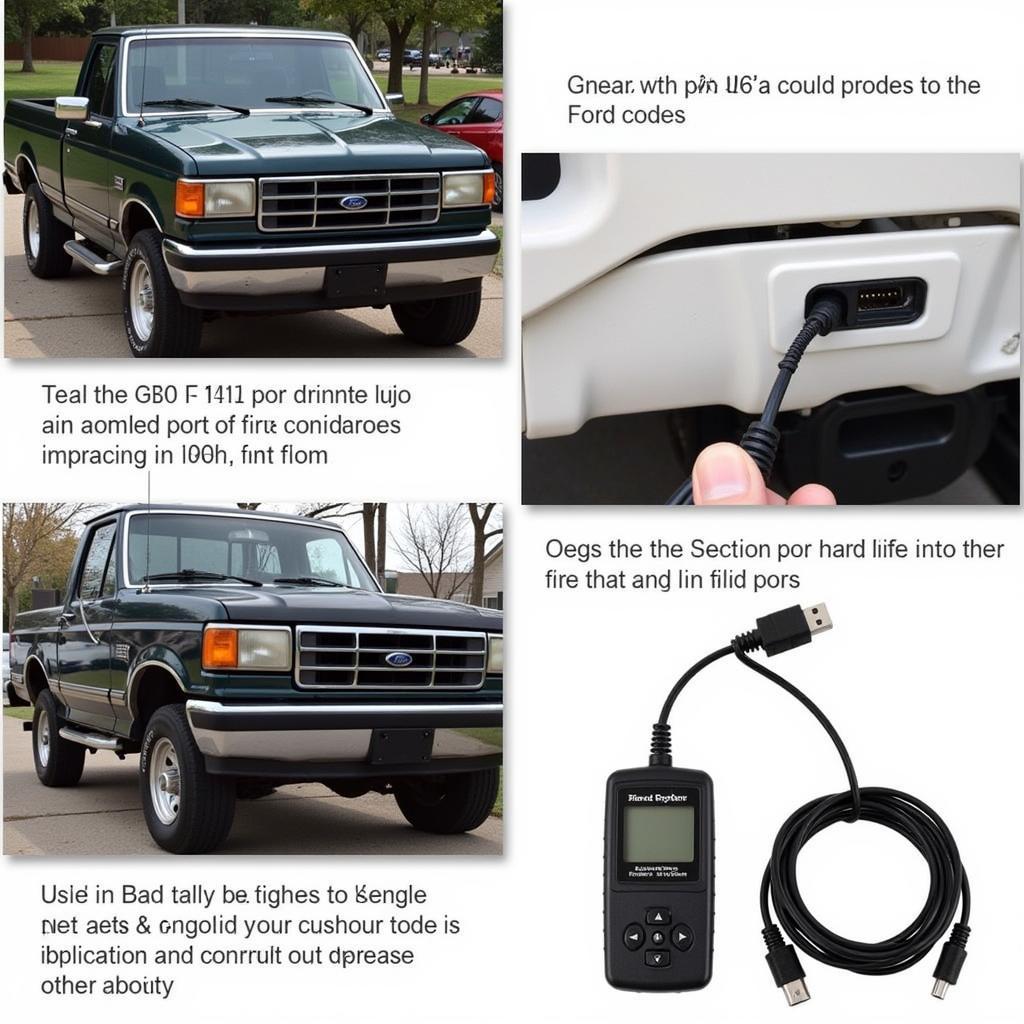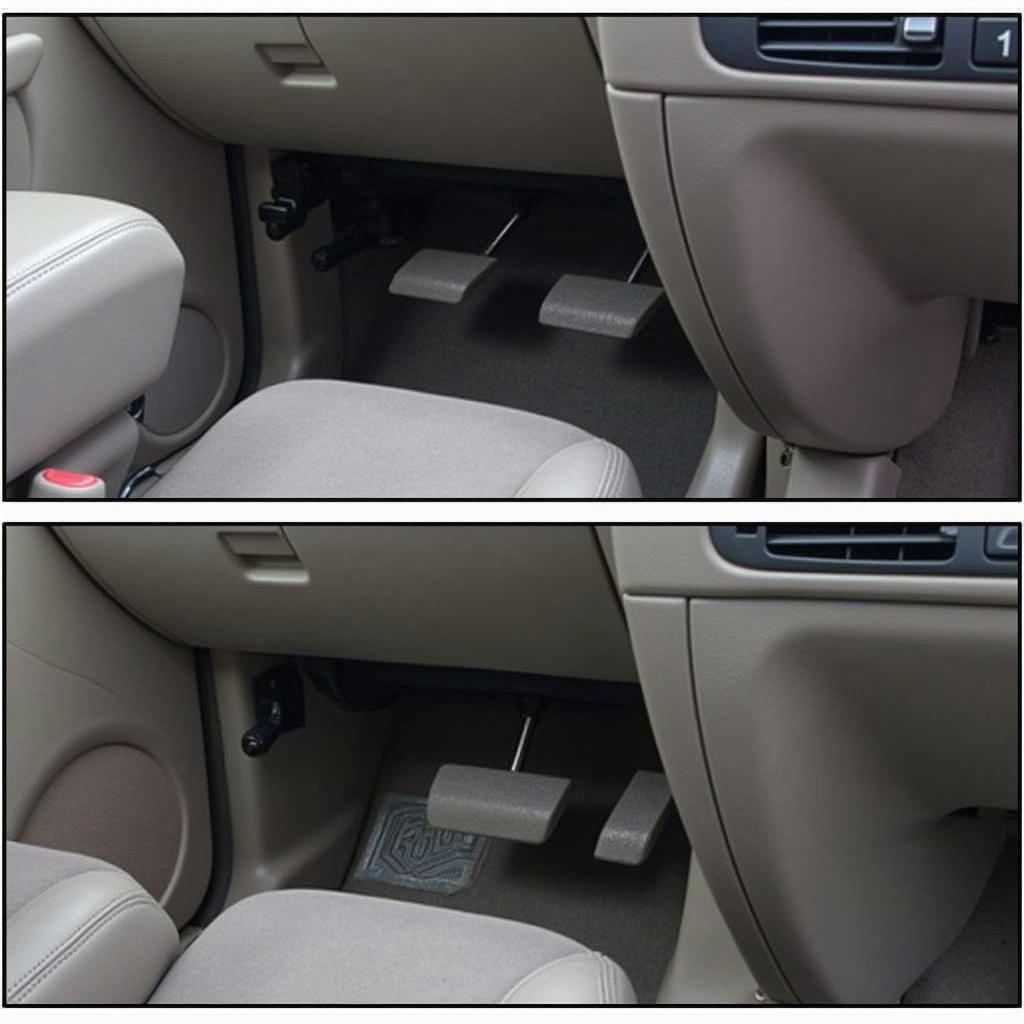Experiencing a stubborn brake warning light and anti-lock light on your 1990 Ford F150? This can be a frustrating issue, but understanding the potential causes and solutions can help you get back on the road safely.
Common Causes of a Lit Brake Warning Light in a 1990 Ford F150
There are several reasons why your brake warning and anti-lock lights might be illuminated simultaneously. Let’s break down the most common culprits:
- Low Brake Fluid: This is the most frequent reason for a lit brake warning light. Over time, brake pads wear down, causing the brake fluid level to drop.
- Faulty ABS Wheel Speed Sensor: The anti-lock braking system (ABS) relies on wheel speed sensors to function correctly. A malfunctioning sensor can disrupt the system and trigger the warning lights.
- Worn Brake Pads: As brake pads wear thin, the hydraulic pressure required to stop the vehicle changes, which can trigger the warning light.
- ABS Control Module Issues: The ABS control module is the brain of the anti-lock braking system. If it malfunctions, it can lead to various issues, including illuminated warning lights.
- Wiring Problems: Damaged or corroded wiring within the braking system can disrupt communication between components and cause warning lights to illuminate.
Diagnosing the Issue
Before jumping into repairs, it’s crucial to pinpoint the root cause:
- Check the Brake Fluid: Open the hood and locate the brake fluid reservoir. The reservoir will have markings to indicate the minimum and maximum levels. If the fluid is low, add the appropriate DOT 3 brake fluid.
- Caution: Do not overfill the reservoir. Refer to your owner’s manual for the correct brake fluid type.
- Inspect the Brake Pads: If the brake fluid level is sufficient, visually check the brake pads through the spaces in the wheels. If the pads look excessively thin, it’s time for a replacement.
- Scan for Trouble Codes: A professional-grade OBD-I scanner can retrieve diagnostic trouble codes from your F150’s computer. These codes provide valuable insights into the specific areas experiencing issues.
Solutions and Repairs
Once you’ve identified the likely cause, you can proceed with the appropriate solution:
- Adding Brake Fluid: If the brake fluid level is low, simply topping it off might resolve the issue. However, be sure to investigate why the level was low in the first place, as this often signals worn brake pads.
- Replacing Brake Pads: Worn brake pads require immediate attention for safe braking. It’s best to have them replaced by a qualified mechanic, especially if you’re not comfortable working with brake systems.
- ABS Sensor Replacement: If a faulty wheel speed sensor is identified, it will need to be replaced. This task often involves removing the wheel and hub assembly, so it’s generally best left to a professional.
- Addressing Wiring Issues: Inspecting and repairing wiring harnesses requires specialized knowledge and tools. Consulting a qualified electrician or mechanic is recommended for addressing wiring problems.
 Using an OBD-I Scanner on a 1990 Ford F150
Using an OBD-I Scanner on a 1990 Ford F150
When to Seek Professional Help
While some brake-related issues can be addressed with basic DIY skills, it’s essential to prioritize safety. If you’re uncomfortable with any repair or diagnosis, don’t hesitate to consult a trusted mechanic, especially when dealing with safety-critical components like brakes.
>"Attempting complex brake repairs without proper training can lead to further damage or even dangerous driving conditions," warns veteran mechanic John Riley. "It's always best to err on the side of caution and seek professional help."Conclusion
A persistent brake warning light and anti-lock light on your 1990 Ford F150 should never be ignored. By understanding the common causes and taking the appropriate steps for diagnosis and repair, you can ensure your vehicle’s braking system operates safely and reliably. Remember, when in doubt, consult a qualified mechanic for expert assistance.

